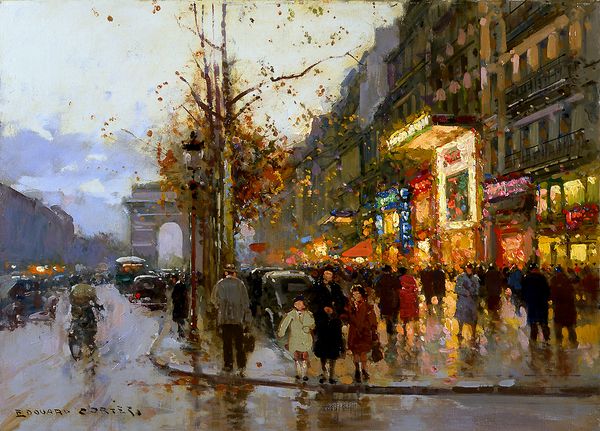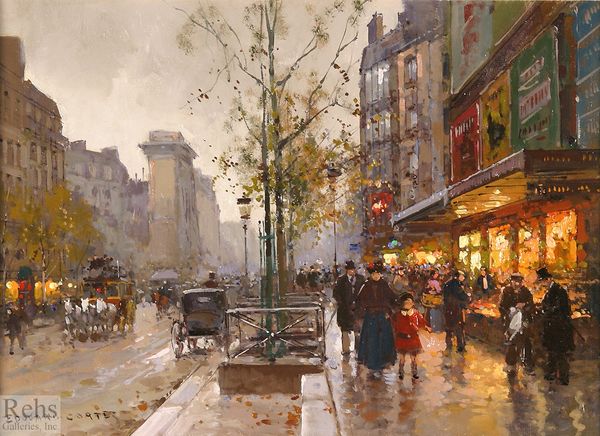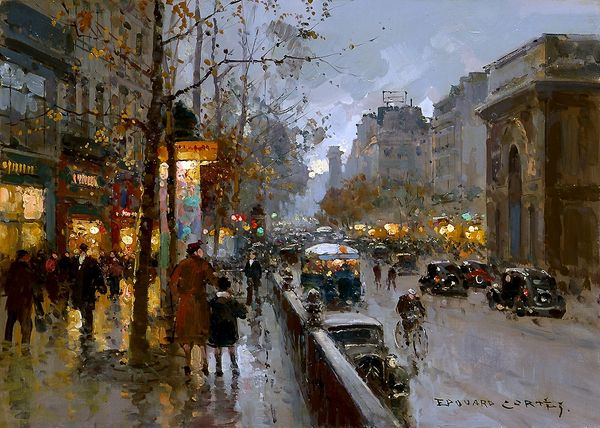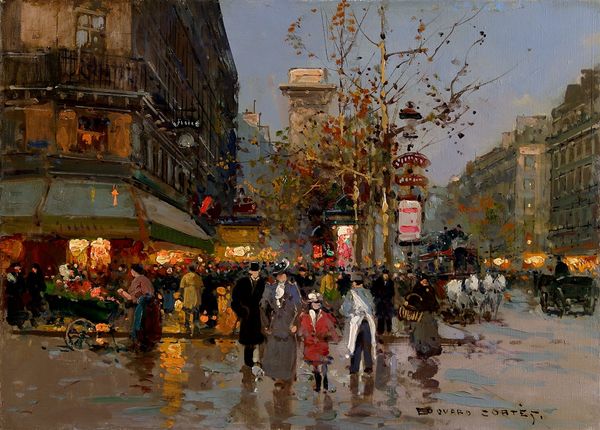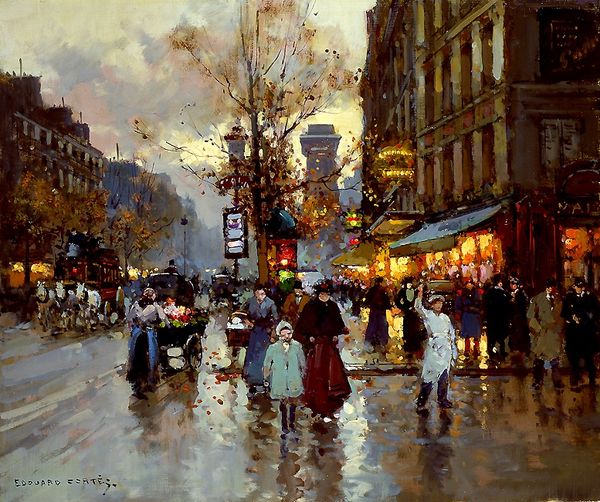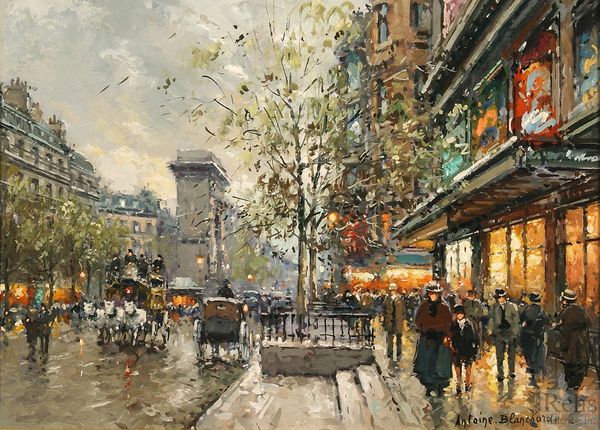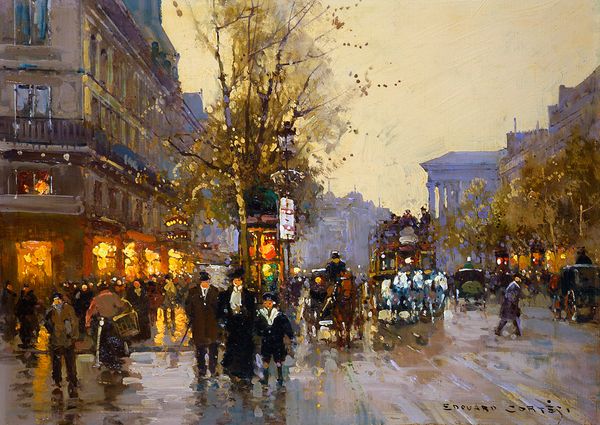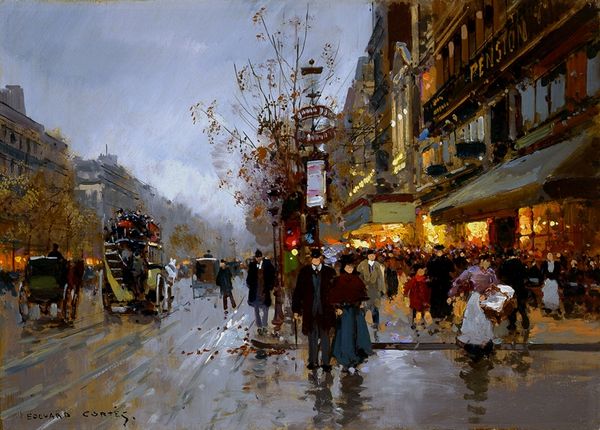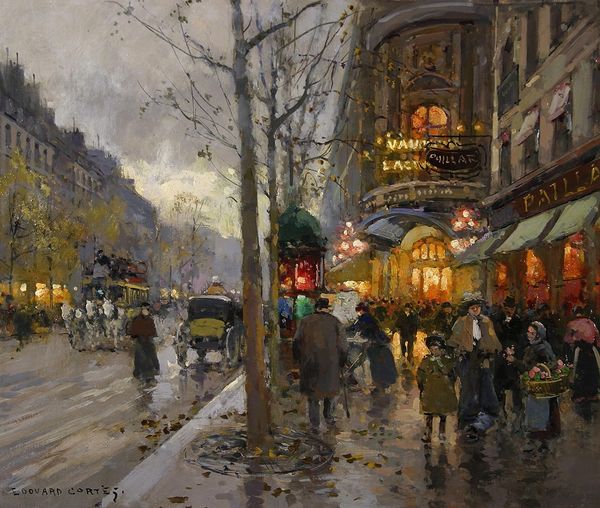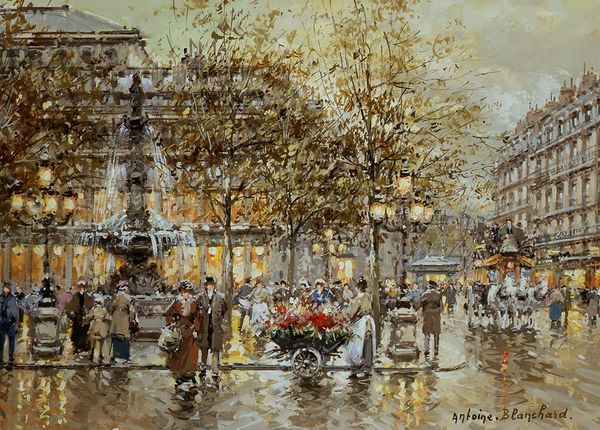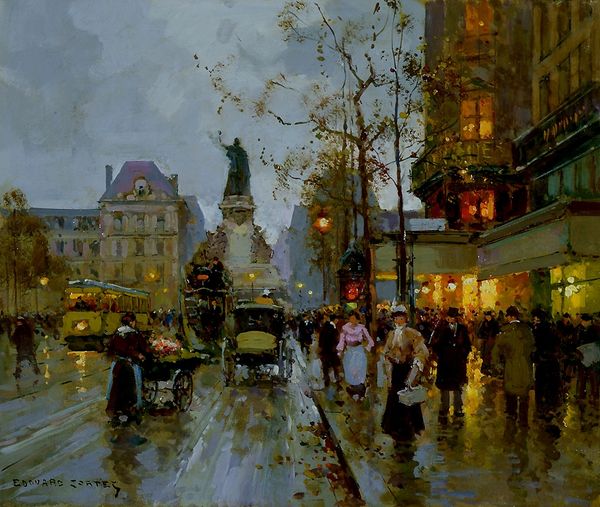
painting, oil-paint, impasto
#
flâneur
#
narrative-art
#
cityscape
#
painting
#
impressionism
#
oil-paint
#
landscape
#
figuration
#
street-photography
#
impasto
#
cityscape
#
building
Copyright: Edouard Cortes,Fair Use
Curator: This is Edouard Cortes' "Madeleine and Rue Royale, Paris." Editor: It has that melancholic charm of a Parisian day. Look at how the light catches the wet streets, giving such a luminous feel amidst the grey. It feels very atmospheric. Curator: Cortes was a master of capturing the Parisian atmosphere. What is fascinating to consider is the social context within which he chose his subject. He lived through considerable social change, didn’t he? Editor: Exactly! Born in 1859 and living well into the twentieth century, Cortes documented the shift from horse-drawn carriages to automobiles in Paris. His paintings provide visual records of a changing urban landscape. Consider the manufacturing of pigments and paints; how the availability of new hues and improved materials allowed artists like Cortes to achieve greater realism and subtlety in their works. Curator: The availability of paints facilitated his incredibly productive approach. And you’re right; this canvas tells a story far beyond a pretty picture of Paris. Notice how he populates the scene with figures. What do you see there? Editor: We see figures, but in groups. The fashion! The cut of the clothes hints at social status. Cortes is not merely depicting architecture but social interactions within an urban stage. It begs the question: what’s their story? Curator: A question Cortes deliberately invites. He stages them carefully, and look closer at the surface of the artwork, see how Cortes utilized an impasto technique with thick strokes to convey texture and movement in the wet pavement? The materials really add to the realism and, let's admit it, its inherent value. Editor: And to think about it in relation to the public is very interesting, his work, endlessly reproduced on calendars, cards... He, inadvertently or deliberately, contributed to this visual myth. How are these works consumed? And how does mass production change their meaning, I wonder? Curator: A complex question that underscores Cortes' importance to us. We begin seeing the city differently when encountering such artistic interpretation. Editor: Indeed, understanding art, no matter the context, truly broadens our perception of what is, what was, and maybe what can be.
Comments
No comments
Be the first to comment and join the conversation on the ultimate creative platform.
